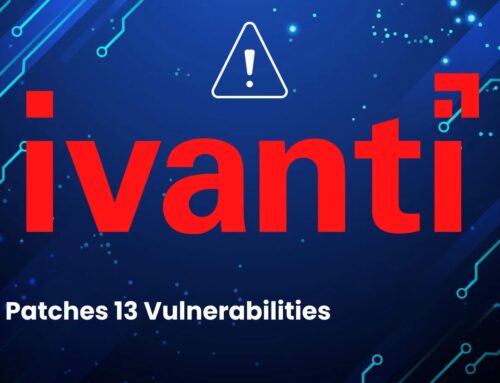Sophisticated DevilsTongue Windows Spyware Tracking Users Globally
The digital landscape is a constant battleground, and the emergence of sophisticated threats demands immediate attention. One such threat, the highly advanced DevilsTongue Windows spyware, has escalated the capabilities of mercenary surveillance, targeting high-value individuals and organisations globally. This modular malware represents a significant evolution in cyber espionage, leveraging an arsenal of advanced techniques to infiltrate and exfiltrate sensitive data. Understanding its mechanisms and implementing robust defences are paramount for safeguarding digital assets.
What is DevilsTongue Spyware?
DevilsTongue is a potent Windows-based spyware, first detected in active campaigns dating back to 2019. Its primary objective is to establish a covert presence on target systems and steal sensitive information. What sets DevilsTongue apart is its modular design, allowing attackers to adapt its functionality and deploy specific components based on the target and mission objectives. This adaptability makes it a formidable adversary, capable of evolving its attack vectors and evasion techniques.
DevilsTongue’s Initial Access and Exploitation Vectors
The initial compromise stage is critical for DevilsTongue. This spyware employs highly effective methods to gain a foothold, primarily through:
- Zero-Day Browser Vulnerabilities: DevilsTongue has been observed exploiting previously unknown vulnerabilities in popular web browsers. These zero-day exploits bypass conventional security measures, allowing for silent and immediate infection upon visiting a malicious website.
- Weaponized Documents: Another common vector involves targeted phishing attempts using weaponized documents. These documents, often disguised as legitimate business correspondence or reports, contain embedded malicious code that executes upon opening, initiating the DevilsTongue infection chain.
The use of zero-day exploits highlights the advanced capabilities of the threat actors behind DevilsTongue, implying significant resources dedicated to vulnerability research and exploit development.
Modus Operandi: Post-Compromise Activities
Once DevilsTongue gains initial access, it establishes a stealthy and persistent presence on the compromised system. Its operations are designed to be undetectable, allowing it to operate silently while extracting valuable intelligence. Key post-compromise activities include:
- Data Exfiltration: The core function of DevilsTongue is to exfiltrate sensitive data. This can include login credentials, financial records, confidential documents, communications logs, and intellectual property. The extracted data is then securely transmitted to attacker-controlled servers, often using encrypted channels to evade detection.
- System Monitoring: The spyware actively monitors user activities, including keystrokes, screen activity, and application usage. This deep level of surveillance allows the attackers to gain comprehensive insights into the target’s habits and access patterns.
- Persistence Mechanisms: DevilsTongue employs sophisticated persistence mechanisms to ensure it remains active even after system reboots. These techniques often involve modifying system startup entries, injecting into legitimate processes, or creating hidden services.
Global Reach and Target Profile
The global reach of DevilsTongue underscores the widespread nature of this threat. While specific targets are not detailed in the source, the description of “high-value targets” typically implies:
- Government officials and diplomats.
- Journalists and human rights activists.
- Executives and employees of critical infrastructure organisations.
- Individuals with access to sensitive intellectual property or classified information.
The focus on high-value targets suggests a well-funded and coordinated operation, indicative of state-sponsored or highly capable private mercenary groups.
Remediation Actions and Mitigations
Defending against advanced spyware like DevilsTongue requires a multi-layered and proactive cybersecurity strategy. Organisations and individuals must implement stringent security measures to minimise their attack surface and detect sophisticated threats.
- Patch Management: Regularly update all operating systems, web browsers, and applications. Promptly applying security patches, especially for known vulnerabilities, is critical in preventing exploitation of zero-day flaws once they become publicly known.
- Endpoint Detection and Response (EDR): Deploy robust EDR solutions across all endpoints. EDRs provide advanced threat detection capabilities, behavioural analysis, and automated response mechanisms to identify and neutralise sophisticated malware like DevilsTongue.
- Advanced Email and Web Filtering: Implement advanced email and web filtering solutions to block malicious attachments, deceptive links, and access to known command-and-control (C2) servers.
- Security Awareness Training: Educate users on the dangers of phishing, social engineering, and the importance of verifying the authenticity of suspicious emails and documents. A well-informed workforce is the first line of defence.
- Principle of Least Privilege: Enforce the principle of least privilege, ensuring that users and applications only have the minimum necessary access rights to perform their functions. This limits the potential damage if a system is compromised.
- Network Segmentation: Implement network segmentation to isolate critical systems and sensitive data. This limits lateral movement for attackers, even if an initial compromise occurs.
- Regular Backups: Maintain regular, encrypted backups of all critical data. Ensure these backups are stored offline and tested periodically to facilitate rapid recovery in the event of a successful attack.
Conclusion
The emergence of DevilsTongue signifies a concerning evolution in the landscape of mercenary spyware. Its sophisticated exploitation techniques, modular design, and global targeting capabilities necessitate a heightened state of vigilance for any organisation handling sensitive information. By understanding its operational methods and implementing comprehensive, proactive security measures, we can collectively strengthen our defences against such advanced persistent threats and safeguard critical digital assets from these digital devils.





